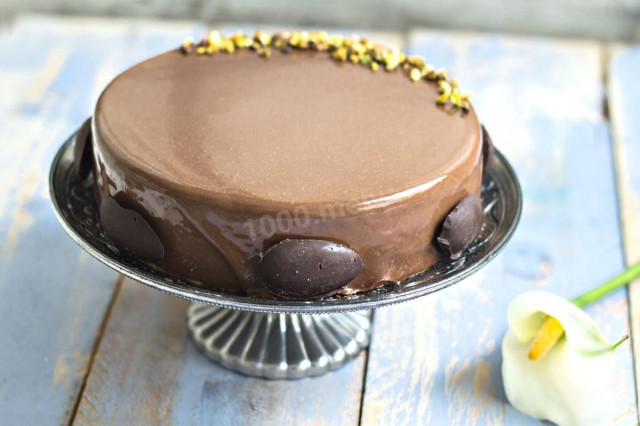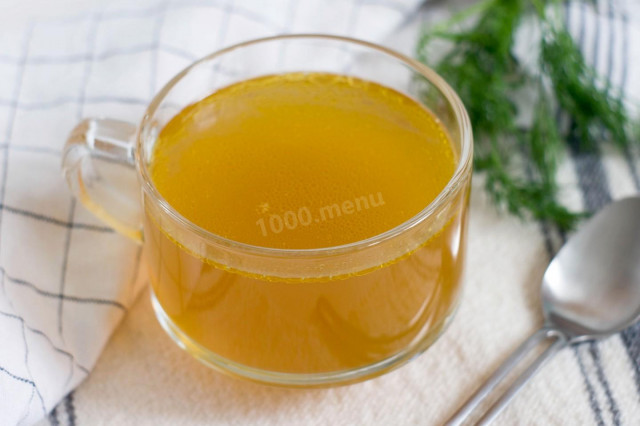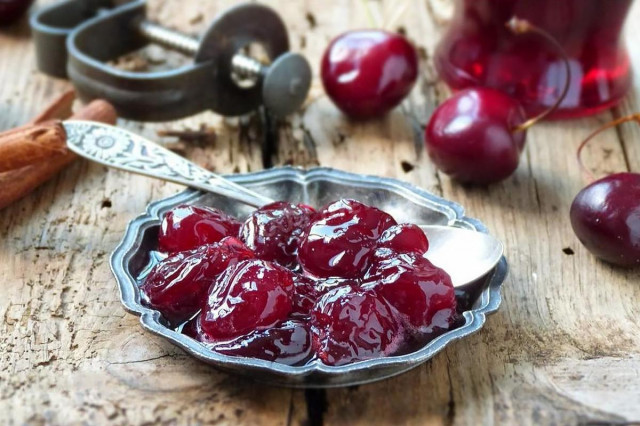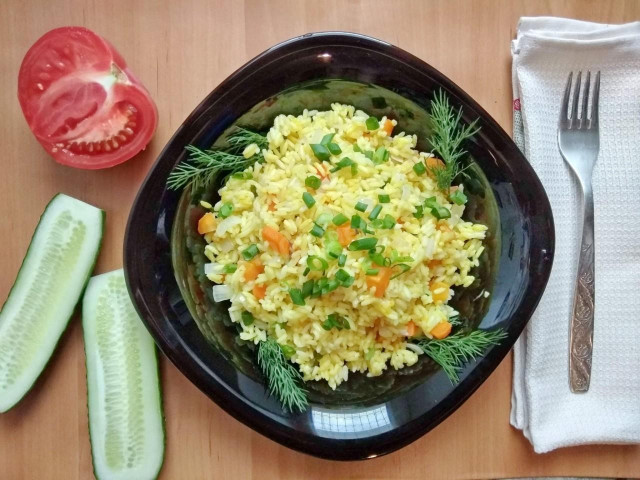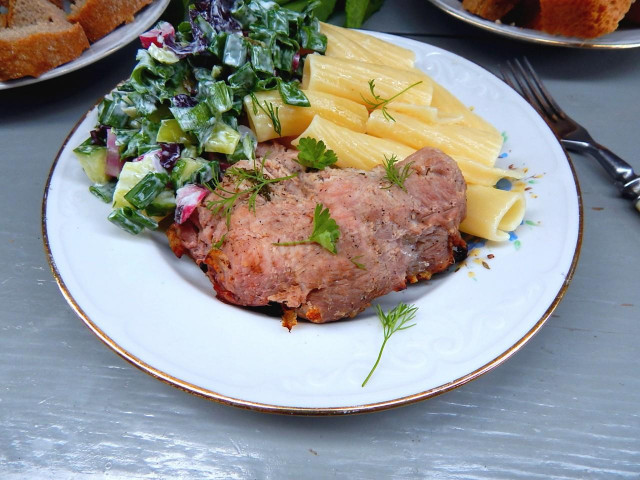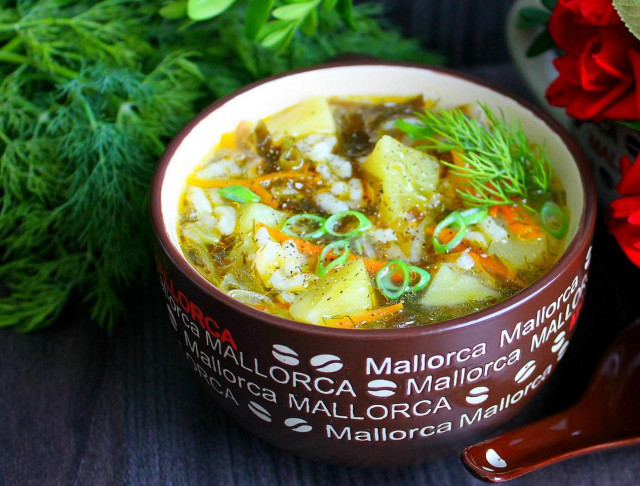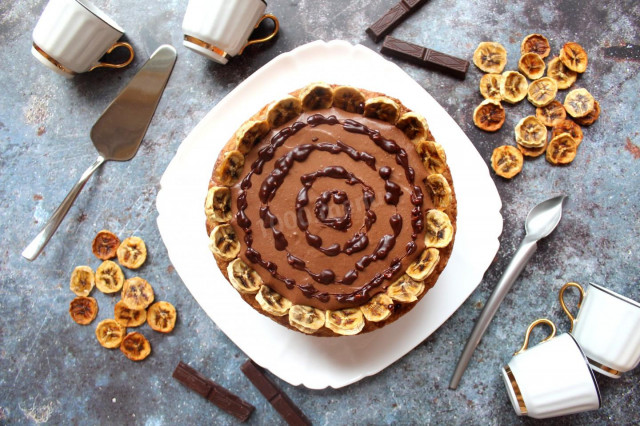Composition / ingredients
Cooking method
1. Caramel sponge cake.
We start working on the cake with a caramel sponge cake. Turn on the oven at 170 degrees. Melt the sugar and butter in a saucepan with a thick bottom until smooth and golden. Turn off the fire, immediately add honey and hot water. Stir with a fork or whisk until completely homogeneous.
In a separate bowl, combine wheat and almond flour. In small portions, we introduce to the caramel, cool it to a warm state and begin to introduce eggs. One by one, add the egg yolks to the dough. Whisk the proteins into a foam in a separate bowl. Add one spoonful to the dough and mix until smooth. At this stage, we do not use the mixer, we work with a spatula or spoon. Spread the dough on a baking sheet covered with paper, bake for 15-20 minutes. As soon as the process is over, we take it out of the oven and leave it to cool on the grill.
2. The next stage is pear caramel.
Soak gelatin in cold water. Melt sugar without adding water in a frying pan with a thick bottom, add cream. We carefully monitor the process so that the caramel becomes golden, but does not burn. It is better to take a ripe and sweet pear, peel it from seeds and peel. With a blender, grind the pear pulp and butter, add to the caramel. Pour gelatin into the mixture, once again whisk the whole mass with a blender and pour it into a mold with a diameter of 16 cm, which must be pre-covered with cling film. Freeze the mixture.
3. Compote.
For pear compote, peel the fruit and cut into 1x1 cm cubes. Soak the gelatin in cold water. In a frying pan, melt the butter, add sugar, pears and fry on each side. Add the star anise, remove from the heat after a minute. Gently stir in lemon juice and gelatin (if leafy, pre-squeeze). Remove the star anise from the mixture, cool it down a little. We take the caramel that has already frozen from the freezer, pour the compote over it and return it to the freezer.
4. Chocolate mousse.
While the freezing process is going on, let's do mousse with dark chocolate. Soak the gelatin in cold water. Combine the milk with vanilla and bring to a boil. Let it brew under a closed lid for 20-30 minutes, take out a vanilla pod. In a microwave oven or in a water bath, melt the chocolate, add it to the milk, mix. We introduce gelatin into the mixture (squeeze it out if it is leafy). Stir the mixture until smooth, cool to 30 degrees. In a separate bowl, whisk the cream, add them to the chocolate mixture and stir.
5. Assembling the cake.
Immediately after cooking, we can start assembling the cake. A ring or a shape with a diameter of 18 cm is lined with cling film. Pour 2/3 of the chocolate mousse on the bottom, level it with a silicone spatula. From the freezer we take out the frozen caramel and compote, take it out of the mold and put it in the middle of the mousse layer, press it slightly. The remaining edges are filled with chocolate mousse, the surface of the caramel is also lubricated with a thin layer. From the biscuit that has already cooled down well, we cut out a circle with a diameter of 16 cm. We put it on a caramel circle, press it down a little. The edges, if they are not on the same level, fill with the remaining chocolate mousse. We send it to the freezer for at least 6 hours.
6. Glaze.
After this time, and preferably in the morning, we start decorating the cake. To do this, you will need chocolate glaze. Fill the gelatin with cold water. Combine sugar, water and invert syrup in a bowl with a thick bottom. Bring the mixture to a boil and achieve an increase in temperature to 103 degrees. In a separate bowl we put crushed chocolate, condensed milk and swollen gelatin. Pour sugar syrup, stir until smooth and send to the refrigerator for 12 hours. Before covering the cake, we take out the glaze, warm it up in a water bath to 35 degrees. We take the cake out of the freezer, turn it onto a dish, remove the film and pour the glaze. Decorate the cake on top if desired, send it to the refrigerator until the glaze solidifies and we can serve it to the table.
Bon appetit!
Caloric content of the products possible in the composition of the dish
- Whole cow's milk - 68 kcal/100g
- Milk 3.5% fat content - 64 kcal/100g
- Milk 3.2% fat content - 60 kcal/100g
- Milk 1.5% fat content - 47 kcal/100g
- Concentrated milk 7.5% fat content - 140 kcal/100g
- Milk 2.5% fat content - 54 kcal/100g
- Buttermilk - 36 kcal/100g
- Cream of 20% fat content - 300 kcal/100g
- Cream of 10% fat content - 120 kcal/100g
- Cream - 300 kcal/100g
- Milk-nut chocolate - 542 kcal/100g
- Nutty chocolate - 580 kcal/100g
- Porous milk chocolate - 506 kcal/100g
- Creamy chocolate - 560 kcal/100g
- Chocolate - 550 kcal/100g
- Pear - 42 kcal/100g
- Dried pear - 246 kcal/100g
- Canned pears - 76 kcal/100g
- Honey - 400 kcal/100g
- Whole durum wheat flour fortified - 333 kcal/100g
- Whole durum wheat flour, universal - 364 kcal/100g
- Flour krupchatka - 348 kcal/100g
- Flour - 325 kcal/100g
- Granulated sugar - 398 kcal/100g
- Sugar - 398 kcal/100g
- Condensed milk with sugar - 324 kcal/100g
- Butter 82% - 734 kcal/100g
- Amateur unsalted butter - 709 kcal/100g
- Unsalted peasant butter - 661 kcal/100g
- Peasant salted butter - 652 kcal/100g
- Melted butter - 869 kcal/100g
- Gelatin - 355 kcal/100g
- Water - 0 kcal/100g
- Lemon juice - 16 kcal/100g
- Vanilla Pod - 287 kcal/100g
- Egg yolks - 352 kcal/100g
- Egg whites - 44 kcal/100g
- Star Anise - 337 kcal/100g
- Almond flour - 560 kcal/100g
- Invert syrup - 400 kcal/100g

